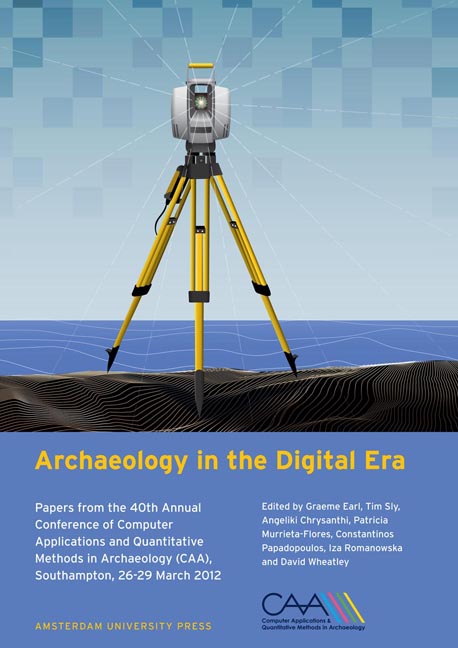 Archaeology in the Digital Era
Archaeology in the Digital Era Can Infovis Tools Support the Analysis of Spatio-Temporal Diffusion Patterns in Historic Architecture?
Published online by Cambridge University Press: 16 February 2021
Summary
Abstract:
This paper's main claim is that analytical reasoning on spatio-temporal diffusion patterns requires a step into abstraction that traditional figurative solutions like maps or 3D virtual models do not encourage. Accordingly, we investigate alternative research practices, namely infovis (Information visualisation) and visual analytics, where the focus is put on revealing patterns of change, and more generally on gaining insight on individuals and collections through visual means. We introduce four graphic combinations implemented on a test case - Zbigniew Dmochowski's architecture of Poland, a respected and comprehensive classification of architectural facts & trends in Poland over a millennium that combines morphological, stylistic and functional division lines. The contribution presents the pluses and minuses of these combinations, the arguments behind their making, how they have shed (or not) a new light on the test case.
Keywords:
Architectural heritage, Information Visualisation, Spatio-Temporal Data, Classification
Introduction
There are books analysts can rely on in order to analyse pieces of historic architecture in space (dictionaries, maps, etc.) or to spot the time slots they can be connected with (literature about History and History of Architecture). There are also some books that relate changes in shapes over time to a context, and thereby provide means for relations assessment: a typical example is Viollet Le Due's encyclopaedia of architecture.
But in all three cases, graphics used almost never fully integrate the time parameter and the spatial features. They rather put them side by side, like in the classic timeline+ cartography paradigm, or provide low-level indications (a limited number of variables taken into consideration) like in the typical map+arrows or map+layers paradigms. Now maybe this was before the computer age? Well, of course not. What computer solutions can we today rely on if we need to understand and represent the patterns of diffusion of an architectural trend, in time and space? Animation techniques, where time is mapped by time? These techniques are well suited for following movements, but they also have proven inefficient in supporting notably explorative tasks.
- Type
- Chapter
- Information
- Archaeology in the Digital EraPapers from the 40th Annual Conference of Computer Applications and Quantitative Methods in Archaeology (CAA), Southampton, 26-29 March 2012, pp. 367 - 378Publisher: Amsterdam University PressPrint publication year: 2014


